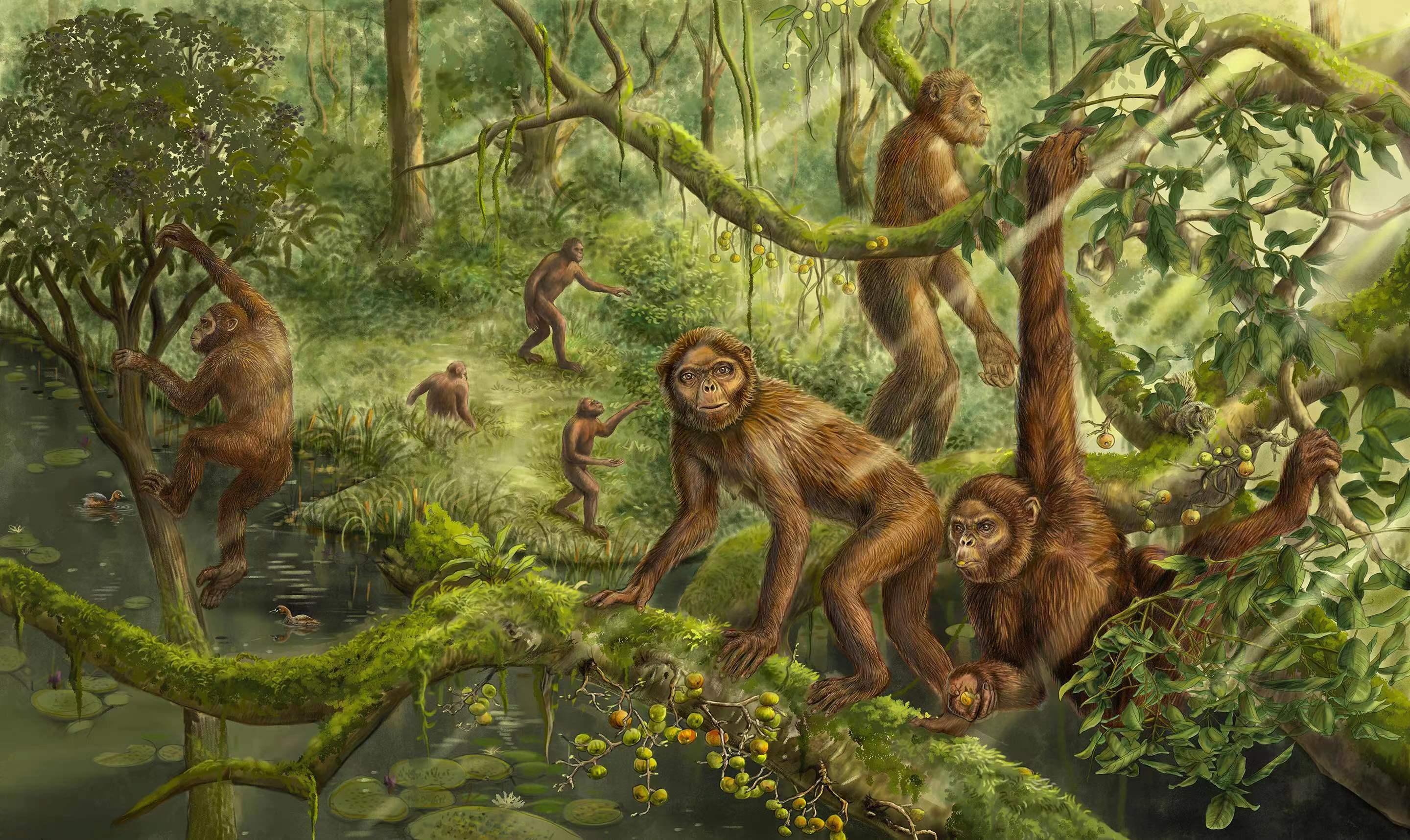Inner ear of miocene fossil ape gives clues to evolution of bipedalism
A new study of a 7–8-million-year-old extinct fossil ape from China called Lufengpithecus offers new insights into the evolution of human bipedalism.
The study, published in The Innovation, was conducted by a team from the Institute of Vertebrate Paleontology and Paleoanthropology (IVPP) of the Chinese Academy of Sciences, the Yunnan Institute of Cultural Relics and Archaeology (YICRA), and New York University (NYU).
Humans and our closest relatives, the living apes, display a remarkable diversity of locomotor abilities, from walking upright on two legs to climbing and clambering in trees to walking using all four limbs. Scientists have long been fascinated by the question of how our unique bipedal stance and movement evolved from a quadrupedal (walking on four limbs) ancestor. However, earlier studies of the diverse locomotor repertoires of living apes, as well as evidence from their fossil record, did not allow the reconstruction of a definitive history of the evolution of human bipedalism.
Most studies of the evolution of ape locomotion have focused on the bones of the limbs, shoulders, pelvis, and spine (the postcranial skeleton) and their linkages to the range of locomotor behaviors seen in living apes and humans. In contrast, the researchers in this study used a novel approach that focused on studying the inner ear.
"The semicircular canals, located in the skull between our brain and the external ear, are critical for our sense of balance and position when we move, and they provide a fundamental component of our locomotion that most people are probably unaware of. The size and shape of the semicircular canals have mathematical correlation with how mammals, including apes and humans, move around their environment. Using modern imaging techniques, we are able to visualize the internal structure of fossil skulls and study the anatomical details of the semicircular canals to reveal how extinct mammals moved," said ZHANG Yinan, first author of the study and an IVPP Ph.D. student.
Lufengpithecus was slightly smaller than a chimpanzee and lived during the Miocene Epoch between 6.2 and 12.5 million years ago in what is now Yunnan Province in southwestern China. Lufengpithecus is known from various parts of its skeleton, including several skulls collected by paleontologists at IVPP and YICRA. Severe compression and distortion of these skulls obscured the bony ear region, however, leading previous researchers to believe that the delicate semicircular canals were not preserved.
"When we scanned the skulls with our state-of-the-art 3D multiscaling and multimodal imaging system at the IVPP we were quite surprised to see the inner ear and its bony semicircular canals. We used high-resolution digital data to create an accurate virtual reconstruction of the delicate structures of the bony canals. We then compared these scans with those of other living and fossil apes and humans from Asia, Europe, and Africa. Our analyses show that early apes shared a locomotor repertoire that was ancestral to human bipedalism," said Prof. NI Xijun of IVPP, project leader and corresponding author of the study.
Using the evolutionary tree of apes to analyze and compare the size and shape of the semicircular canals and related features of the inner ear, the researchers identified several key nodes in the evolutionary history of ape locomotion. The locomotor behavior of most fossil apes and their reconstructed ancestral states do not resemble living apes. This means that extinct apes did not move exactly like living apes and humans, and the postcranial skeletons of living apes may not provide the best analogs for reconstructing the locomotion of extinct species.
Later, the human lineage diverged from the great apes with the acquisition of bipedalism, as seen in Australopithecus, an early human relative from Africa. The international team also proposed that cooler global temperatures, beginning ~3.2 million years ago, may have been an important environmental catalyst in promoting the locomotor diversification of apes and humans.
"Our study points to a three-step evolution of human bipedalism. First, the earliest apes moved in the trees in a style that was most similar to aspects of the way that gibbons in Asia do today. Second, the last common ancestor of apes and humans was similar in its locomotor repertoire to Lufengpithecus, using a combination of climbing and clambering, forelimb suspension, bipedalism, and quadrupedalism. It is from this broad ancestral locomotor repertoire that human bipedalism evolved," said co-author Prof. Terry Harrison of NYU.
The remarkable diversity of locomotor patterns found in fossil apes and their living relatives was an important aspect of their success for millions of years in Eurasia and Africa. A specialized lineage of African apes later developed a unique mode of bipedal locomotion that eventually led to humans.

Fig. The ecological restruction of Lufengpithecus
Download attachments: